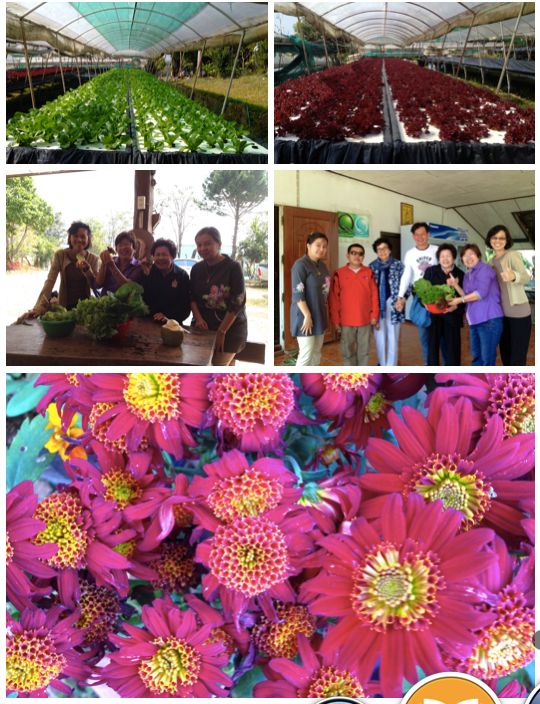Phufai Flora, Chaiyaphum
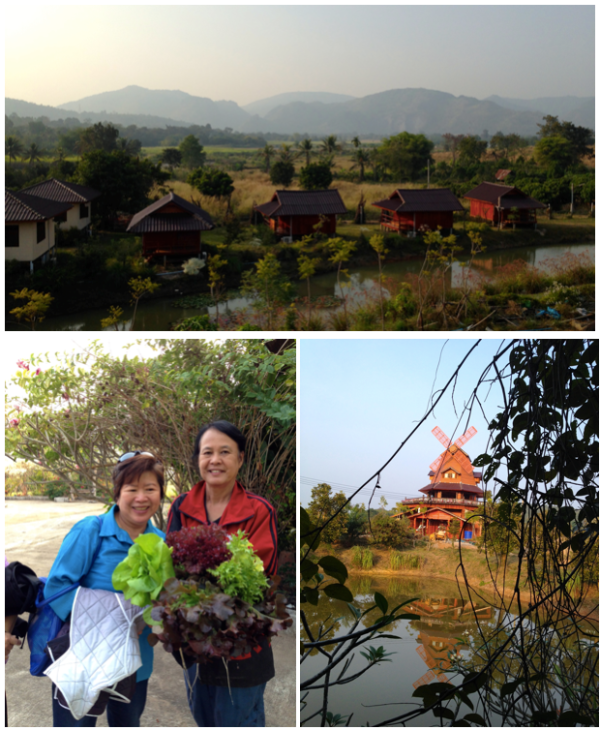
Dr. Wanpen Wirojanagud arranged an eco-tour to Phufai Flora on December 29-30, 2013, the very end of the year. Dr. Supar Nanakorn, Director of General Education Center at Khon Kaen University, joined us in this trip. This trip was made even more inspirational because of Dr. Supar, when we talked about religion and meditation on the way to this organic farm.
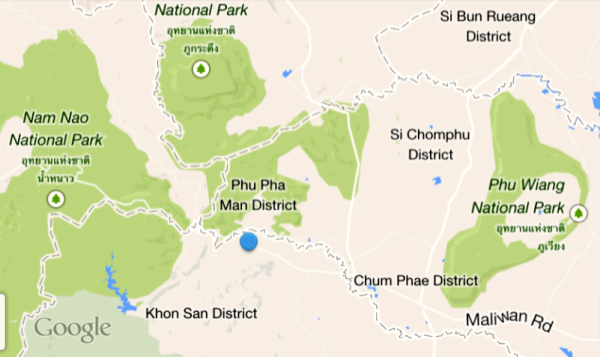
Montree and his family
Dr. Montree Boonsener is the master of this Phufai Flora, a name taken from Phu Pha Man District. Dr. Montree earned his Master degree in Geotechnology at Asian Institute of Technology, and Ph.D. degree in Environmental Engineering at Khon Kaen University under Dr. Wanpen’s supervision. With the great help of his wife Udomluk, he intends to develop his farm into a learning and ecological education centre. Montree is good at engineering planning, while Udomluk excels in horticulture. In addition, both of them also gain their professional advices from their 2 sons, Chakat specialised in food technology, and Prach in industrial engineering.
Phufai Flora
We arrived at the farm in the afternoon, and were received warmly by Montree and Udomluk. First, Montree led us to walk around his farm cabins, facilities and hydroponic vegetable garden. There’s a house for ground water treatment by using reverse osmosis process, providing all drinking water demand in the log cabins. The water used in the hydroponic vegetable garden is pumped from the nearby creek.
Windmill tower
In the centre of this farm area, the windmill tower receives the most attention as soon as you enter this place. This tall tower building provides multi-functional usages, including villagers' gathering, banquet, sightseeing, musical entertainment, and accommodation. It’s the most enjoyable time, having dinner with fresh salad at the upper floor with all mountain range in the eyes, and with tender singing voices of Montree and Udomluk in the ears.
Next day, I woke up quite early in the morning, in order to see the sunrise. It’s rare that you can see both the sunset and the sunrise at the same scenic point. But here you may see the sunset in the direction of Nam Nao National Park, while having dinner, and the sunrise from the forest area in the east.

(Sunset)
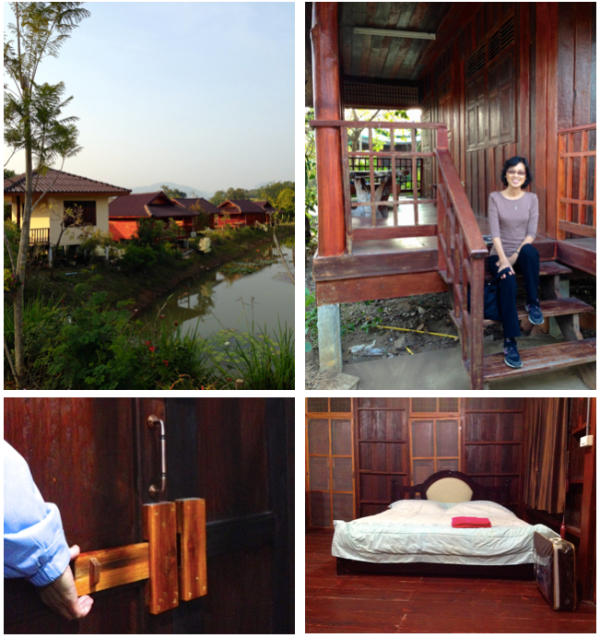
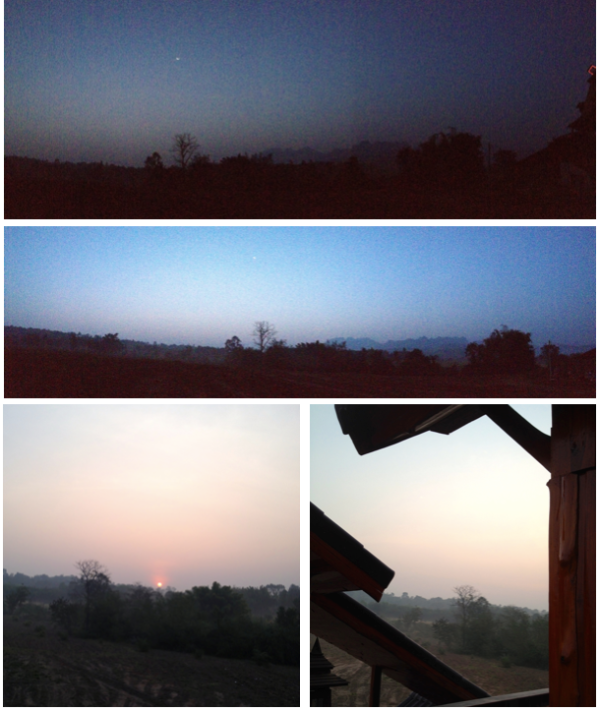
(Sunrise)
Breakfast
The breakfast was the most “unforgettable" because of this special meal of sticky rice. Montree said that the stick rice they cooked is a special species quite different from what we usually have eaten in the restaurant. It was grown in drought area and could emit some delightful flavour while cooking. It smells so good and tastes so delicious that you may eat it only, forgetting there’re still other dishes on the table. To be exaggerating, you may even forget the presence of your wife. Another dish I liked very much was the Issan sausage. It tastes a little bit sour. This may be because of fermented sticky rice stuffed inside.
The breakfast was simple but really unforgettable to me. I should have asked for bringing home the whole bucket of unfinished sticky rice.
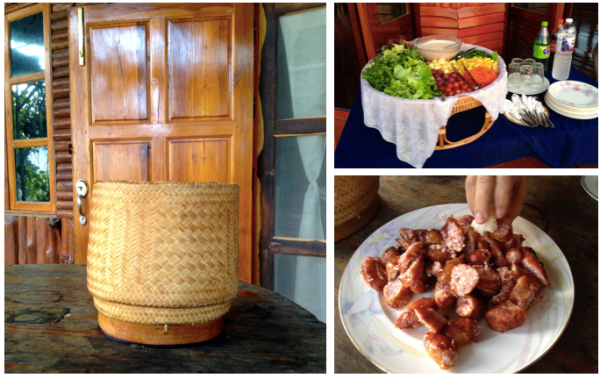
Wild walk
After breakfast, Montree toured us around the wild area. In the open space, it used to be the ricefield. Montree reserves this for the future development. As we walked into the border of his farm, there’re newly planted teak trees standing out there. According to Montree, it takes 20 years to grow them up fully, in order to make use of teak wood for construction. To be self-sustained in an ecological way, something just has to be well-prepared far ahead of time. Next to Montree’s farm, there’s a forest of rubber trees. Why growing rubber trees here? He said they are forest product with high economic value, and it’s safer to grow them in here than in southern Thailand when considering social stability.
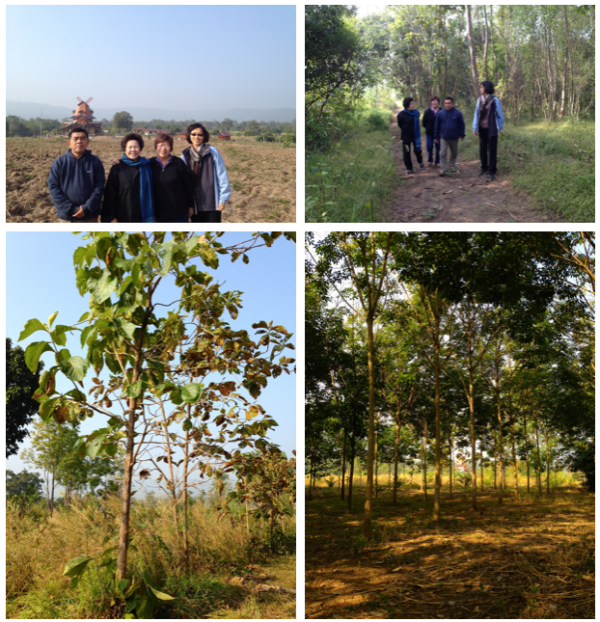
Our trip was concluded by visiting another hydroponic vegetable farm run by Udomluk’s brother.
